Explore the latest insights from top science journals in the Muser Press daily roundup, featuring impactful research on climate change challenges.
Table of Contents
Climate change driving ‘cost-of-living’ squeeze in lizards
Desert lizards are facing a ‘cost-of-living’ squeeze as global temperatures continue to rise, a new study finds.
For a lizard, the ‘cost-of-living’ is tightly linked to its body temperature, which dictates both how much food it needs and whether it can go outside to feed. Desert lizards are especially challenged because food is sparse, and it is often too hot to forage.
Published in Science, the study found climate warming can ‘squeeze’ desert lizard energy budgets by increasing the food they need just to survive while decreasing their time to find it.
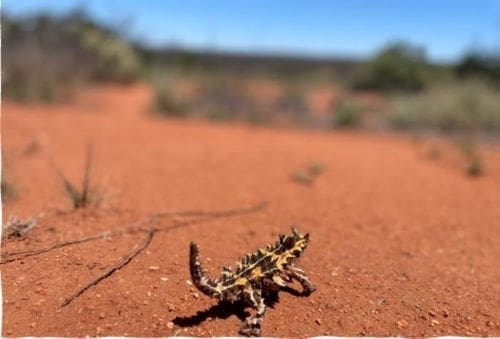
Lead author and University of Melbourne researcher Dr Kristoffer Wild said climate warming will affect species differently based on when they forage and illustrates the importance of tailoring conservation strategies to safeguard species populations.
“Cost-of-living is a concept humans are all too aware of, but the same concept applies to ectotherms – or cold-blooded animals – such as lizards. We just need to switch the currency from money to energy and realize that for lizards these costs and their ability to meet them depend on temperature,” Dr Wild said.
“Our study reveals that as deserts heat up, diurnal (day-active) lizards face a squeeze — needing more food while having less time to find it. On the other hand, nocturnal (night-active) lizards may benefit from warmer nights that allow more hunting time.
“In other words, it’s like diurnal lizards paying higher bills with fewer work hours, while nocturnal lizards can counter high bills by gaining extra work hours during the warmer nights.”
The researchers were able to predict the cost of living with a model that combines physics with biology. Co-author and University of Melbourne researcher, Professor Michael Kearney said they were able to test their model predictions against historical field data to quantify how climate warming impacts desert reptiles across continents.
“We were able to reconstruct, within two or three degrees, what a field biologist observed in the middle of the Australian and African deserts more than 50 years ago,” Professor Kearney said.
“This gives us confidence to predict the direct effects of climate warming on these animals in the future.
“If we can better understand the ecological processes underpinning these cost-of-living pressures, we can better anticipate the species most at risk and act accordingly.”
The researchers also found that globally, areas that have had historically more warming will face more challenges in the future.
“We can anticipate future warming impacts to be more severe in Africa than in Australia, with African desert lizards requiring more food with less time to find it,” Dr Wild said.
Researchers said the effects of warming on energy budgets are further compounded by other factors associated with climate change including food availability and increased water requirements in arid environments.
“Importantly, we show energy pressures are greatest in summer and spring, which is the reproductive window for many species,” Dr Wild said.
“Our next steps will be to bring food and water resources into our calculations and translate the results into growth and reproduction, which will help us predict whether populations will survive further change under warming.”
Journal Reference:
Kristoffer H. Wild et al. ‘Climate change and the cost-of-living squeeze in desert lizards’, Science 387, 303-309 (2025). DOI: 10.1126/science.adq4372
Article Source:
Press Release/Material by University of Melbourne
Featured image credit:
NASA scientists find new human-caused shifts in global water cycle
In a paper published in Proceedings of the National Academy of Sciences (PNAS), NASA scientists use nearly 20 years of observations to show that the global water cycle is shifting in unprecedented ways. The majority of those shifts are driven by activities such as agriculture and could have impacts on ecosystems and water management, especially in certain regions.
“We established with data assimilation that human intervention in the global water cycle is more significant than we thought,” said Sujay Kumar, a research scientist at NASA’s Goddard Space Flight Center in Greenbelt, Maryland, and a co-author of the paper.
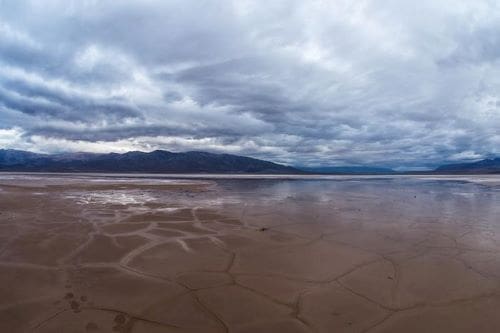
The shifts have implications for people all over the world. Water management practices, such as designing infrastructure for floods or developing drought indicators for early warning systems, are often based on assumptions that the water cycle fluctuates only within a certain range, said Wanshu Nie, a research scientist at NASA Goddard and lead author of the paper.
“This may no longer hold true for some regions,” Nie said. “We hope that this research will serve as a guide map for improving how we assess water resources variability and plan for sustainable resource management, especially in areas where these changes are most significant.”
One example of the human impacts on the water cycle is in North China, which is experiencing an ongoing drought. But vegetation in many areas continues to thrive, partially because producers continue to irrigate their land by pumping more water from groundwater storage, Kumar said.
Such interrelated human interventions often lead to complex effects on other water cycle variables, such as evapotranspiration and runoff.
Nie and her colleagues focused on three different kinds of shifts or changes in the cycle: first, a trend, such as a decrease in water in a groundwater reservoir; second, a shift in seasonality, like the typical growing season starting earlier in the year, or an earlier snowmelt; and third a change in extreme events, like “100-year floods” happening more frequently.
The scientists gathered remote sensing data from 2003 to 2020 from several different NASA satellite sources: the Global Precipitation Measurement mission satellite for precipitation data, a soil moisture dataset from the European Space Agency’s Climate Change Initiative, and the Gravity Recovery and Climate Experiment satellites for terrestrial water storage data. They also used products from the Moderate Resolution Imaging Spectroradiometer satellite instrument to provide information on vegetation health.
“This paper combines several years of our team’s effort in developing capabilities on satellite data analysis, allowing us to precisely simulate continental water fluxes and storages across the planet,” said Augusto Getirana, a research scientist at NASA Goddard and a co-author of the paper.
The study results suggest that Earth system models used to simulate the future global water cycle should evolve to integrate the ongoing effects of human activities. With more data and improved models, producers and water resource managers could understand and effectively plan for what the “new normal” of their local water situation looks like, Nie said.
Journal Reference:
W. Nie, S.V. Kumar, A. Getirana, L. Zhao, M.L. Wrzesien, G. Konapala, S.K. Ahmad, K.A. Locke, T.R. Holmes, B.D. Loomis, M. Rodell, ‘Nonstationarity in the global terrestrial water cycle and its interlinkages in the Anthropocene’, Proceedings of the National Academy of Sciences 121 (45): e2403707121 (2024). DOI: 10.1073/pnas.2403707121
Article Source:
Press Release/Material by NASA | Goddard Space Flight Center
Machinery behind bacterial nanowires discovered
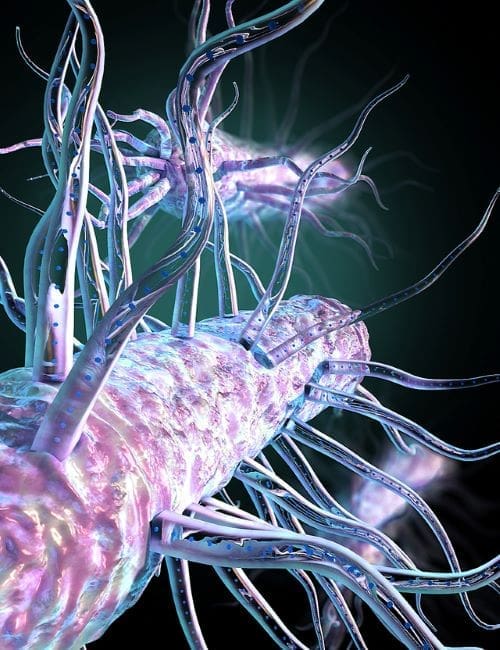
Almost all living things breathe oxygen to eliminate the excess electrons produced when nutrients are converted into energy.
However, most microbes that mitigate pollution and climate change don’t have access to oxygen. Instead, these bacteria — buried underground or living deep under oceans — have developed a way to eliminate electrons by “breathing minerals” from the soil through tiny protein filaments called nanowires.
In previous research, a team led by Nikhil Malvankar, Associate Professor of Molecular Biophysics and Biochemistry at Yale’s Microbial Sciences Institute, showed that nanowires are made up of a chain of heme molecules, just like hemoglobin in our blood, thrust into the environment to move electrons. To leverage the power of these microbes, scientists need to know how those nanowires are assembled.
The Yale team led by Cong Shen has now discovered the machinery that assembles the nanowires, making practical applications possible. Of the 111 heme proteins, only three are known to polymerize to become nanowires.
Not only did the team identified the surrounding machinery that makes it possible for these proteins to become nanowires, but they also demonstrated that changing some of the machinery’s components can accelerate nanowire reproduction and bacterial growth.
This is an important next step in engineering bacteria to efficiently produce electricity, clean pollutants from water, and lower atmospheric methane levels.
The paper, published in Cell Chemical Biology, is co-authored by Malvankar lab members Aldo Salazar-Morales, Joey Erwin, Yangqi Gu, Anthony Coelho, Sibel Ebru Yalcin, and Fadel Samatey, and collaborators Prof. Kallol Gupta and Wonhyeuk Jung.
Journal Reference:
Cong Shen, Aldo I. Salazar-Morales, Wonhyeuk Jung, Joey Erwin, Yangqi Gu, Anthony Coelho, Kallol Gupta, Sibel Ebru Yalcin, Fadel A. Samatey, Nikhil S. Malvankar, ‘A widespread and ancient bacterial machinery assembles cytochrome OmcS nanowires essential for extracellular electron transfer’, Cell Chemical Biology (2025). DOI: 10.1016/j.chembiol.2024.12.013
Article Source:
Press Release/Material by Yale University
New study reveals how climate change may alter hydrology of grassland ecosystems
New research co-led by the University of Maryland reveals that drought and increased temperatures in a CO2-rich climate can dramatically alter how grasslands use and move water.
The study provides the first experimental demonstration of the potential impacts of climate change on water movement through grassland ecosystems, which make up nearly 40% of Earth’s land area and play a critical role in Earth’s water cycle.
The study appears in the January 17, 2025, issue of the journal Science.
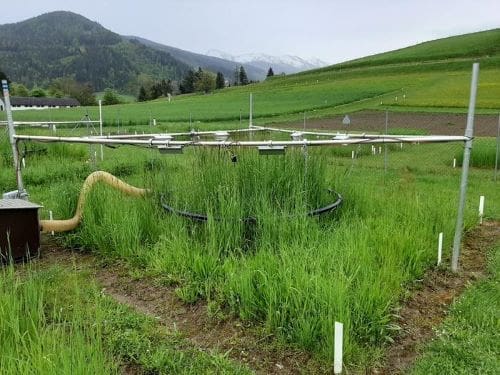
“If we want to predict the effects of climate change on Earth’s water resources, we need data showing how the hydrologic cycle will respond at a small scale where we can define mechanisms, but that just hasn’t been available,” said Jesse Radolinski corresponding author of the study, a post-doctoral research associate in the UMD Department of Environmental Science & Technology who began the work at the University of Innsbruck.
“Our experiments found that under summer drought conditions, and higher air temperatures that are expected under a future with elevated CO2, two things change fundamentally: One, the structural properties of the soil in the root zone change so that water flows differently than we expected, and two, these altered climate conditions and soil properties cause the plants to access water differently.”
Currently, new rainfall tends to linger in the root zone where it mixes with existing soil water (i.e., previous rainfall) before percolating into local streams and rivers. Radolinski said this study suggests that under future climate conditions, intense rainfall may move more quickly through the soil into local water bodies, interacting less with this stored water and potentially bringing nutrients and pollutants with it.
In addition, plants subjected to these future drought conditions conserve more water, releasing less back to the atmosphere through transpiration. That could mean less atmospheric cooling, triggering a feedback loop of more drought and more warming.
Radolinski and his colleagues conducted their experiment with the University of Innsbruck in open plots in an Austrian grassland. They simulated six different climate conditions by manipulating air temperature and CO2 levels, and introducing recurring drought with large, automatically deployed shelters that prevented natural rainfall from reaching the plots.
When they simulated rainfall, they used water with a traceable isotope of hydrogen called deuterium, and then tracked its path through the plants and the soil.
Their results showed that after recurring droughts in plots with elevated CO2 and warming, the structure of pores in the soil changed so that older water could remain locked in smaller pores, while newer water flowed into larger pores that drained more quickly.
In addition, the plants were effective at accessing the most readily available soil moisture and conserved water loss by releasing less to the atmosphere through transpiration. This may help plants adapt to water stress under future drought conditions, though more research is needed to tease out the effects on growth.
The study reveals that soil and plant water interactions could be much more complex than previously thought, with significant consequences for the ability of ecosystems to withstand and recover from drought. These insights will be critical in informing conservation strategies and managing ecosystems in a rapidly changing climate.
Journal Reference:
Jesse Radolinski et al. ‘Drought in a warmer, CO2-rich climate restricts grassland water use and soil water mixing’, Science 387, 290-296 (2025). DOI: 10.1126/science.ado0734
Article Source:
Press Release/Material by University of Maryland
Mussel bed surveyed before World War II still thriving
A mussel bed along Northern California’s Dillon Beach is as healthy and biodiverse as it was about 80 years ago, when two young students surveyed it shortly before Pearl Harbor was attacked and one was sent to fight in World War II.
Their unpublished, typewritten manuscript sat in the UC Davis Bodega Marine Laboratory’s library for years until UC Davis scientists found it and decided to resurvey the exact same mussel bed with the old paper’s meticulous photos and maps directing their way.

The new findings, published in the journal Scientific Reports, document a thriving mussel bed community that nonetheless shows the mark of climate change. Ninety species of invertebrates were found to live within the mussel bed — slightly more than those found in 1941. Among them were warm-adapted species more typically found in southern waters, such as the California horsemussel Modiolus carpenteri and the chiton Mopalia lionota.
“We anticipated finding dramatic losses of species,” said lead author Emily Longman, who conducted the study as a UC Davis graduate student and is currently a postdoctoral fellow at the University of Vermont. “We predicted we’d have a big decline in biodiversity. Shockingly, we didn’t find that. If anything, we found more species. This mussel bed community is really healthy.”
Living author
Adding to their excitement, the researchers learned after completing their survey that one of the old manuscript’s authors, Milton Hildebrand, was not only still alive at age 101, but living in nearby Davis as a retired UC Davis zoology professor. Longman and Sanford got to meet with the WWII veteran in 2019 before his death the following year.
“Transferring scientific knowledge across generations like this is more than just the numbers and data — it’s a very human endeavor,” said senior author Eric Sanford, a professor with Bodega Marine Laboratory in the UC Davis Department of Evolution and Ecology. “Watching Emily Longman, a graduate student, interact with this 101-year-old scientist who initiated this research project 80 years earlier, was wonderful.”
The paper’s other author, Harvey I. Fisher, died in 1994 after a distinguished career in zoology. Fisher and Hildebrand were UC Berkeley graduate students taking a field course when they conducted their survey, before Bodega Marine Laboratory existed.
“Milton thought the results we had were fascinating,” Longman said. “He was charming.”
Stretched mussels
Habitat-forming species, like mussels, kelp and coral, are foundational to marine ecosystems because they provide critical “housing” for other species. The authors of both papers counted and recorded every invertebrate species they found within the Dillon Beach mussel bed.
“I think of them as the Motel 6 for rocky shores,” Sanford said. “Crabs, snails, worms, limpets, sea cucumbers — all of these species find lodging down in these three-dimensional beds.”
Previous research documented a nearly 60% decline in species diversity among mussel beds in Southern California. Yet, little data was available to understand how Northern California mussel beds were faring. One mussel bed cannot represent the entire coast of Northern California, but the Dillon Beach study provides an encouraging outlook amid a sea of recent bad news for oceans.
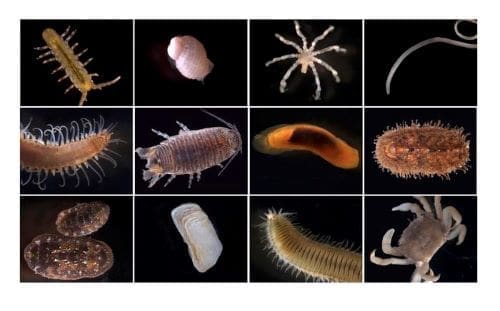
“Anecdotally, having worked at Bodega Marine Laboratory for over 20 years, the types of mussel beds at Dillon Beach are what we see in Sonoma and Mendocino counties,” Sanford said. “In general, they appear to be quite healthy.”
The resampling effort showed no biodiversity loss compared with what Hildebrand and Fisher saw in 1941, but it did reveal a signal of climate change: The relative abundance of species had shifted.
Cool-adapted species with a northern distribution ranging from California to British Columbia and Alaska, had decreased. Meanwhile, warm-adapted species with a southern distribution ranging down to Baja California, Mexico were becoming more abundant. The authors said such a shift was expected given that ocean temperatures recorded in Bodega Bay have been increasing since the 1950s.
Mussel memories
Longman and Sanford said their study highlights the value of sources and data sets considered “nontraditional” by science — such as an old, unpublished paper by students completing a field course.
“Untraditional resources, like maps from long ago, Indigenous knowledge, and old photos, are treasure troves,” Longman said. “They’re the only window into the past for a lot of these places.”
The study was funded by the Bilinski Educational Foundation, the Rafe Sagarin Fund for Innovative Ecology, and the National Science Foundation. The researchers acknowledge Bodega Marine Laboratory’s librarian Molly Engelbrecht for her commitment to archiving and digitizing student papers so they can serve as historical resources for the future.
The authors also thank Hildebrand and Fisher, who wrote in their 1941 report: “We hope our paper may serve as a basis for an ecological study of the area by ourselves or others at a later date.”
Journal Reference:
Longman, E.K., Merolla, S., Talke, S.A. et al. ‘Evaluating historical changes in a mussel bed community in northern California’, Scientific Reports 15, 1930 (2025). DOI: 10.1038/s41598-025-86105-9
Article Source:
Press Release/Material by University of California – Davis (UC Davis)
Featured image credit: Gerd Altmann | Pixabay



![Image: Jowar [sorghum] bud at initial stage (s. climate, science, research)](https://www.muser.press/wp-content/uploads/2024/09/Jowar_Sorghum-muser-res-1-1024x768.jpg)
